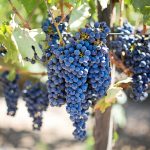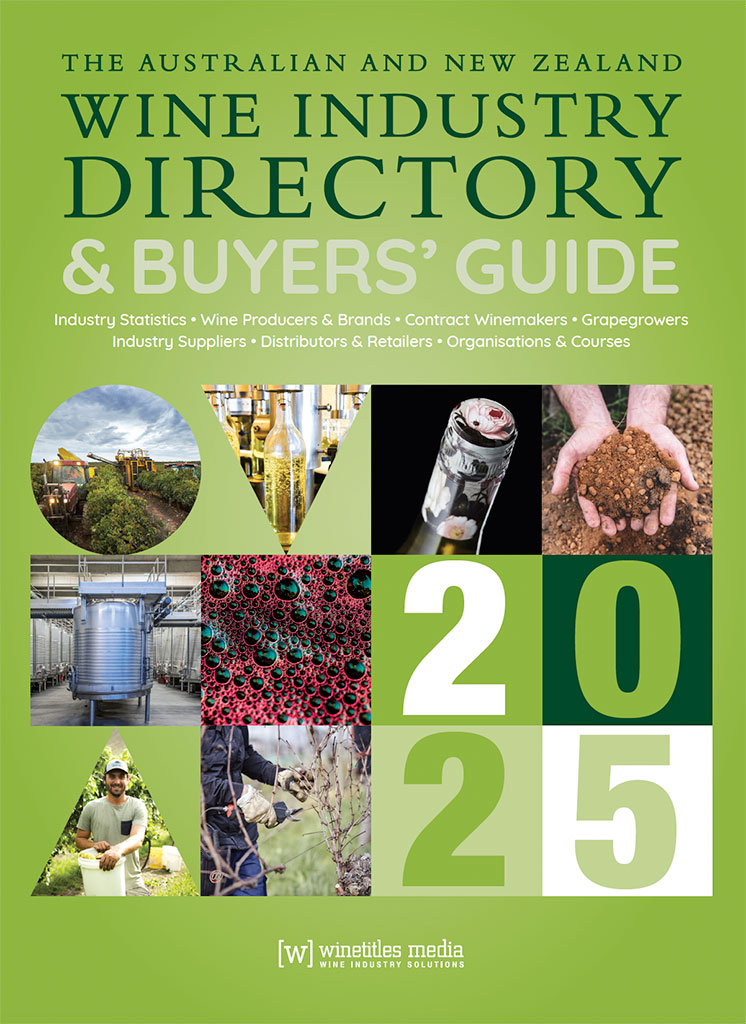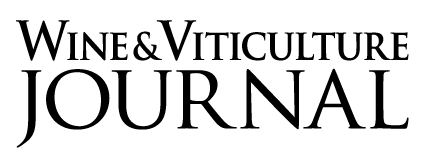Richard Smart has much to praise about wine journalist Jancis Robinson’s latest book Wine Grapes – A complete guide to 1368 vine varieties, including their origins and flavours, co-authored by Julia Harding and José Vouillamoz, claiming it is one of the most comprehensive and authoritative grape and wine books ever published. Smart says publication of the book is timely given the fresh interest in Australia and many other countries in expanding production beyond the handful of so-called ‘international varieties’.
Last October saw the release of one of the most significant books ever published about grapes and wine, in any language. The book, titled Wine Grapes – A complete guide to 1368 vine varieties, including their origins and flavours, is authored by Jancis Robinson, Julia Harding and José Vouillamoz and is published by Allen Lane (Penguin), in the UK, and Ecco (Harper Collins), in the US. The book has its own website, www.winegrapes.org
Jancis Robinson needs no introduction to the wine world; she is a well-known wine journalist, with a plethora of wine books, articles, videos and an excellent webpage to her credit. Of her books, the Oxford Companion to Wine – first published in 1994 and now in its fourth edition – has more than 4,000 entries, covering anything you may want to know about wine. I had the pleasure of being the book’s viticulture editor, and know of Robinson’s scholarship and thoroughness. The Oxford Companion has won every major wine book prize, and I predict that her newest triumph will do the same.
This book is very timely. There are groups of wine producers around the world, interested to explore the enormous diversity of grape varieties, and to present consumers with more wines than those from the handful of ‘international’ varieties. But attempts to understand what varieties are out there, where they are grown, and the wine styles they produce have been very difficult, as the information was never before in one source.
There is an interesting story behind this book. At an initial meeting between the three authors in 2008, Vouillamoz proposed a book covering the few best-known varieties to include information about his speciality, which was grapevine genetics and DNA testing, and the origin of grapevines. Vouillamoz is a botanist who had been part of the University of California team under Professor Carole Meredith, which had previously made pioneering studies into the parentage and origin of important grape varieties such as Cabernet Sauvignon. Interestingly, the first DNA profile of grapevines was published by CSIRO scientists in Australia in 1993.
The response of Robinson was typical: Why not cover all varieties from which commercial wine is made? At the very least, an extraordinary proposition – but, they have done just that!
The second author, Julia Harding MW, has worked with Robinson on revisions of the Oxford Companion, so she knows about all manner of wine topics. What a job the three of them have done. The book is breathtaking in its scope.
They have listed the 40 countries of origin for grape varieties, many more than most people would ever imagine. Most might pick the ‘big three’ of Italy (with 377 varieties), France (204 varieties), and Spain (84 varieties). But who could name many of the other countries of origin? Unlikely inclusions are Germany, with 76 varieties, many of them bred in the last 60 years. The US has 76 varieties also, but who might have thought that? Australia has five varieties, bred by the CSIRO. Surprisingly, Georgia has 27 varieties and Turkey 26, but why might these two countries be a surprise? This is because Georgia and Turkey are suggested as ‘centres of origin’ of the grapevine, a point of interest which is well-covered in this volume.
Also, there is an excellent account of just how grapevine varieties come about. The process is not unusual; it is similar to the way humans make babies. You need both female and male parents. Grapevine varieties come from seedlings; imagine if you planted a seed from a Chardonnay berry, and it grew. You would have ‘grown’ or ‘created’ a totally new variety, the only thing we know it is that the ‘mother’ is Chardonnay, but we do not know the ‘father’ without paternity testing, using DNA. The pollen may have come from other nearby vines, or from Chardonnay. Your ‘baby’ vine may produce black grapes!
This book contains the best explanation of the origin of grape varieties that I have ever read, and should be compulsory reading for any student of grapes or wine. The relationship between varieties, clones, and mutation is carefully explained, as is the concept of ‘Adam’ and ‘Eve’ varieties, called ‘founder varieties’ in this book. With DNA technology, we can work upwards through grapevine variety ‘family trees’.
One example is where the founder varieties in France included some familiar names like Pinot Noir and Cabernet Franc, and some less familiar like Savagnin (planted mistakenly in Australia for Alvarinho), Mondeuse Noir and Gouias Blanc. Some varieties thought to be French are more likely Spanish – like Carignan, Grenache and Mourvedre. Further, Cabernet Franc may well have originated in Spain’s Basque country.
The introduction to this book goes directly to one of the most important contemporary marketing issues of wine, the use of ‘varietal labelling’, promoted initially in California to escape generic labels like ‘Burgundy’ and ‘Claret’. The practice was widely adopted in the New World, and by the 1990s varietal labelling was so common that some French wines were similarly labelled, rather than more traditionally by the region.
This comprehensive book on grape varieties suitable for wine production is long overdue. Even for professional viticultural scientists, the literature on grape varieties has been confusing. There were classical studies based on vine vegetation and fruit attributes; a study called ampelography. These were typically regional, and were difficult to use, as one grape variety may have many names, both within and between locations. Often the true relationship between them could not be exactly determined before DNA technology.
This book is obviously the result of a great deal of research. It runs to 1,279 pages including the introduction, it has a 119-page bibliography with more than 3,600 entries, also 39 pages of index and, amazingly, acknowledgements of 244 people worldwide. In itself, this list speaks volumes to the depth of research undertaken for the book.
The book presentation is also outstanding. It is cloth bound and comes in a heavy cardboard box, also cloth bound. Being a lover of old books, I especially appreciated the faithful reproduction of the water colour paintings of bunches and leaves from the magnificent French ampelography by Viala and Vermorel, dating back to 1901. There are eighty of these pictures, scattered throughout the book.
The very heart of the book is the individual variety entries. They are exceedingly well organised and guide the reader through the minefield of confusing misnomers. Each variety is given a principal name (which is capitalised), by which the book is alphabetically arranged. The principal name is the one that is judged to be the most correct. Every variety has a brief sentence of description: for example, for Counoise (which I chose completely at random), it says ‘Minor but valued southern Rhone ingredient, occasionally varietal’. Then follows a berry colour description, using five grades, and a list of principal synonyms and varieties the vine is commonly mistaken for (Counoise). All principal names, and synonyms, and mistaken names are listed in the index, which facilitates searching.
Then follows origins and parentage (and, if necessary, other hypotheses, where there is doubt), and viticultural characteristics. This is followed by where it is grown and what the wine tastes like. The latter entry will include planted area (from the latest census, which is not necessarily near the book’s publication date), and some principal wine-producing companies. The summary tasting notes on wine styles are most useful. This compilation of so much data on a single variety is the greatest achievement of this impressive book. I do not know of any other grape variety book with this level of well-researched information.
The icing on the cake, should it be needed, is the new information offered in this book. Vouillamoz has chosen to present new discoveries with around 300 previously unpublished relationships between grape varieties, and 14 pedigree diagrams, or family trees. The most complex is for Pinot Noir, covering three pages, and there is one for Syrah (Shiraz) as well. The book is up to date, with literature searching completed in August 2011, and the authors’ are already collecting material for an update, and invite comments to the webpage.
This book is a seminal masterpiece, and it will come to be regarded as such in both popular and scientific grape and wine literature. The concept of combining commercial wine experience over an extensive geographical scale, with traditional ampelography and recent genetic studies is so truly comprehensive that it beggars comparison with any other. Congratulations to Jancis Robinson and her team for gathering the necessary information and for such a professional and thorough execution.
Who might use this book? The initial releases pre-Christmas 2012 were pitched towards the consumer market, and I am sure that wine enthusiasts will find the book a valuable addition to their libraries. However, I believe that there is another large market out there among grape and wine producers, and students and teachers of grapes and wine. Frankly, I cannot imagine that professionally-minded people associated with grape and wine production would not want a copy on their bookshelf.
I believe that this is one of the most comprehensive and authoritative grape and wine books ever published.




















